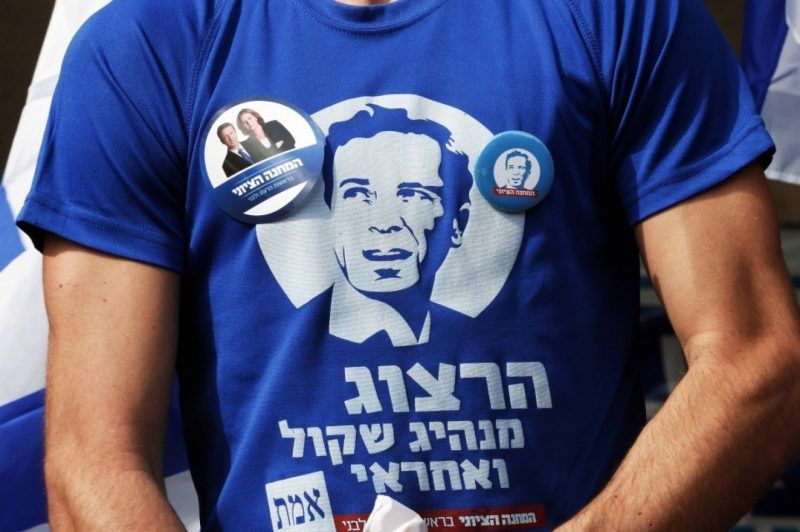
On the face of it, last week’s election for a new leader for Israel’s left-wing Labor Party is a positive signal of change. But in reality, this internal party election, held less than four years after the previous one, is a strong signal of the weakness of the political left in Israel. It’s also a sign that its main political vehicle — the Labor Party — is in a poor state and not likely to successfully challenge its main rival on the right, Likud, and take power from its longtime leader and current prime minister, Benjamin Netanyahu.
As sometimes happens, the first round did not lead to a clear winner. There will be a runoff between the top two Labor leaders, Amir Peretz and Avi Gabbay. The former party leader, Isaac Herzog, came in third: He won 16 percent of the vote, to Gabbay’s 27 percent and Peretz’s 32 percent.
Herzog’s defeat is partly a product of his own making. He rarely distinguished himself as an alternative to Netanyahu, the chairman of the Likud party. At times Herzog called out the government in stirring speeches, but often he pronounced positions close to Netanyahu’s own policies. Reports swirled that he was moving close to an agreement with Netanyahu to join his government. Confirmed negotiations were enough to taint Herzog with the accusation that all he cared about was to get close to the center of power.
This election highlights Labor’s inability to find a leader and message that it can confidently and consistently run on. Counting the next leader, there will have been eight party heads since 1995, with two leaders serving twice (three if Peretz wins). Israel’s voting patterns suggest that the political right will remain dominant for the near future, which in turn makes it harder for Labor to present itself as a real rival to the right-wing Likud.
Labor was the dominant party in Israel since the establishment of the state in 1948. Labor itself was formed out of a merger of other left-wing and socialist parties in 1968, but its core existed as Mapai (the Hebrew acronym for Worker’s Party of the Land of Israel) in the pre-state period, in the Yishuv (the Jewish community that existed in the area during the British Mandate), through the first two decades of the state. Mapai was itself a union of other, smaller, left-wing parties and movements.
The Mapai party came to control both the national political institutions of the Yishuv and much of the World Zionist Organization, the representative body of the Zionist movement. Its leaders comprised the bulk of the founding generation of the state and led most of its security offices, governments and civil administrations until the late 1970s and 1980s.
By then, the party’s popularity had declined considerably, while demographic, economic and social changes dented its allure to voters. And the sheer fact that Labor had been the governing party in one form or another for several decades — all of these developments converged and weakened the party. Internal fighting during the 1950s and 1960s, a harbinger of a similar development in the 2000s, distracted party officials and leaders.
After Likud won the 1977 election and with the help of a new party — the Democratic Movement for Change, which siphoned off votes from Labor — formed a non-Labor government for the first time in Israel’s history, Labor was forced into opposition. Throughout the 1980s, Labor still did well in elections, winning at least 40 seats (except in 1988, when it won 39). But Likud was by now the dominant party, garnering the support of other key parties in the Knesset, Israel’s parliament. Labor recovered to some degree when Yitzhak Rabin won the 1992 election, but with his assassination in 1995, the party never again had a leader strong enough to maintain party discipline and appeal to voters.
It continued to fall throughout the 2000s, hitting 13 seats in 2009. The constant rotation at the topic has made it impossible for the party to cohere around a single powerful message or policy agenda.
In democracies, political parties are meant to serve as vehicles for policy articulation and to represent various interests. If parties do not win power, their purpose is to serve as an opposition, to critique the ruling party and provide an alternative choice to voters. Israel’s Labor has not played these roles very well since the 2000s. And it is difficult to see that condition changing any time soon.
Certainly an external or internal shock to the political system, such as an indictment and prosecution of Netanyahu followed by a jostling for leadership of the right, might push voters to Labor. The next party leader might be more successful than the previous ones and win the next election, scheduled for 2019 but likely held sooner.
But a full recovery is unlikely, and could be unsustainable by this point. The Israeli party system today is more fractured than it ever was, and boundaries between various ideological camps are blurred. The ongoing conflict with the Palestinians, including terrorist attacks and frequent wars with Hamas, is also often seen as a constant reminder to voters that the left in its naivete brought Israel the Oslo accords and, with it, false trust in the Palestinians and Hamas in Gaza.
All of this has made it harder for Labor to offer itself as a likely alternative to Likud, whoever becomes its leader.
Brent E. Sasley is an associate professor of political science at the University of Texas at Arlington. He tweets at @besasley.
